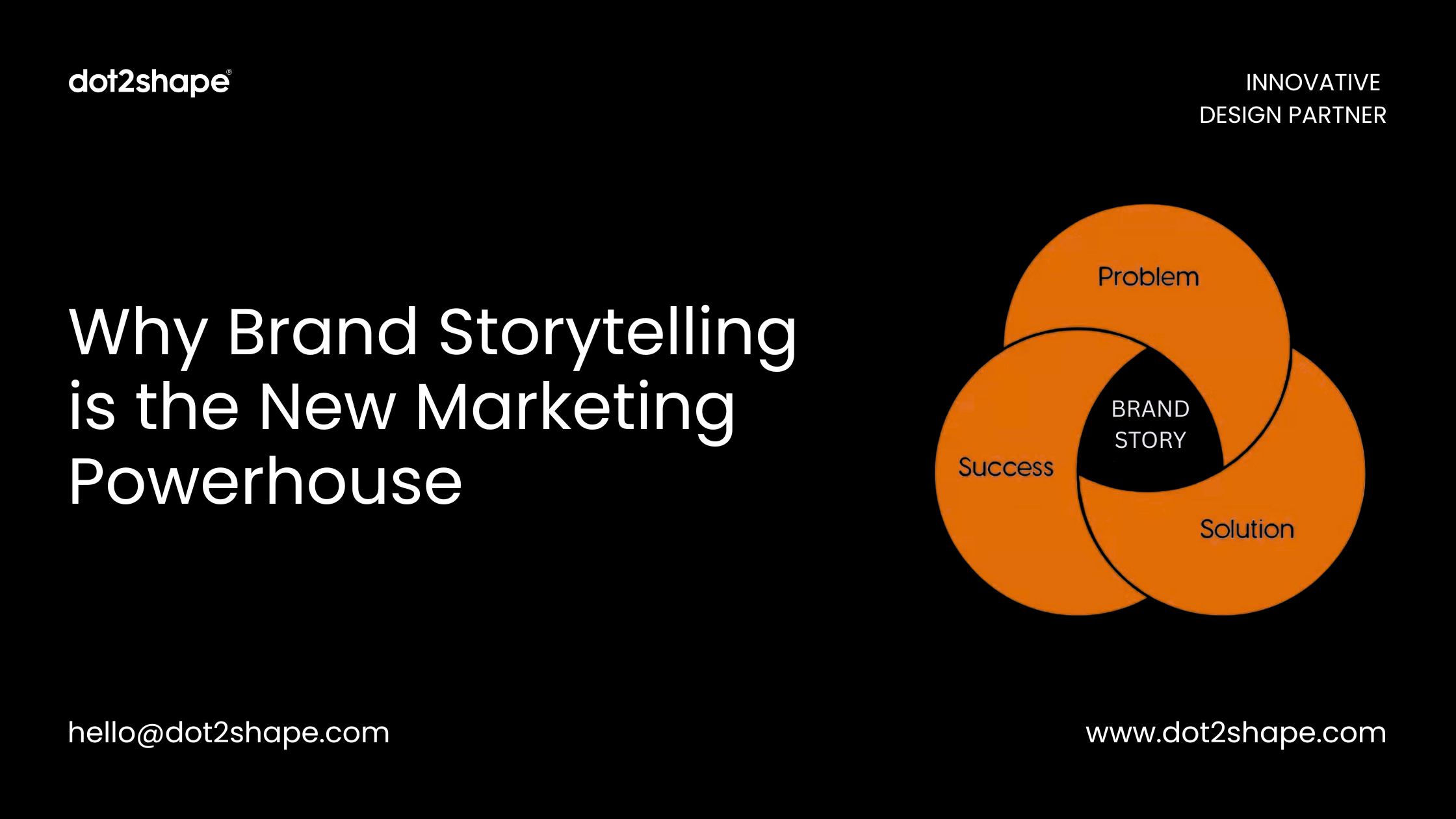In the saturated digital marketplace, traditional advertising methods are losing their grip on consumer attention. American businesses are discovering that brand storytelling has emerged as the most powerful force in modern marketing, fundamentally transforming how startups and established companies connect with their audiences. This shift toward narrative-driven marketing isn’t just a trend. it’s a strategic revolution that’s reshaping the entire landscape of content-driven branding.
The Rise of Narrative Marketing in the Digital Age
The statistics speak volumes about the power of storytelling in business. Companies that master the art of brand storytelling see 30% higher customer retention rates and 23% increased revenue growth compared to their competitors who rely solely on traditional marketing approaches. This dramatic shift reflects a deeper change in consumer behavior, where American audiences increasingly seek authentic connections rather than aggressive sales pitches.
Content-driven branding has become the cornerstone of successful marketing strategies because it addresses a fundamental human need: the desire for meaningful connections. When businesses craft compelling narratives around their products and services, they tap into the psychological triggers that drive purchasing decisions and foster long-term customer loyalty.
Understanding Emotional Connection Through Strategic Storytelling
The foundation of effective brand storytelling lies in creating genuine emotional connection with target audiences. Unlike traditional advertising that focuses on product features and benefits, narrative marketing delves deeper into the human experience, addressing pain points, aspirations, and values that resonate with specific customer segments.
Research from leading marketing analytics firms reveals that emotionally connected customers have a 306% higher lifetime value and are 71% more likely to recommend brands to others. This emotional connection becomes particularly crucial for startups entering competitive markets, where differentiation through storytelling can make or break early growth trajectories.
The Psychology Behind Brand Narratives
Human brains are hardwired to process and remember stories more effectively than isolated facts or statistics. When businesses incorporate storytelling elements into their brand message, they activate multiple areas of the brain simultaneously, creating stronger memory formation and deeper engagement. This neurological advantage explains why narrative-driven marketing campaigns consistently outperform traditional advertising approaches.
For UI/UX design agencies and branding consultants, understanding this psychological foundation becomes essential for creating user experiences that not only function well but also tell compelling stories through every interaction point.
Building Customer Trust Through Authentic Narratives
Customer trust has become the ultimate currency in modern business, and storytelling provides the most effective pathway to earning and maintaining that trust. When businesses share authentic stories about their founding journey, challenges overcome, and values upheld, they humanize their brand in ways that foster deeper connections with American consumers.
The transparency inherent in good storytelling directly addresses the trust deficit that many modern consumers feel toward corporate messaging. By sharing vulnerable moments, learning experiences, and genuine motivations, businesses demonstrate authenticity that traditional marketing cannot replicate.
Trust-Building Storytelling Strategies for Startups
Startup founders possess unique advantages in storytelling because their entrepreneurial journey naturally provides compelling narrative material. The challenges of building something from nothing, the passion that drives innovation, and the vision for solving real problems create authentic story foundations that resonate powerfully with audiences.
Successful startup storytelling focuses on:
Origin Stories: Sharing the “why” behind business creation builds emotional investment
Challenge Navigation: Demonstrating resilience and problem-solving builds credibility
Value Alignment: Connecting business missions with customer values creates loyalty
Future Vision: Inspiring audiences with compelling visions of positive change
Visual Storytelling: The UI/UX Design Advantage
Visual storytelling represents the next evolution in brand communication, where design elements become narrative tools that guide users through carefully crafted experiences. UI/UX designers who understand storytelling principles create interfaces that don’t just function they communicate, engage, and inspire action.
The integration of visual storytelling with user experience design creates powerful synergies that enhance both usability and brand impact. Every color choice, typography decision, and interaction pattern contributes to the overall narrative that users experience when engaging with digital products.
Design Elements That Tell Stories
Modern web design and mobile app development increasingly incorporate storytelling principles through:
Progressive Disclosure: Revealing information in narrative sequences that build understanding
Visual Hierarchy: Guiding user attention through story-like progressions
Micro-Interactions: Creating moments of delight that reinforce brand personality
Emotional Design: Using visual elements to evoke specific feelings and responses
These design storytelling techniques become particularly powerful when combined with strong brand voice that maintains consistency across all touchpoints.
Developing Your Distinctive Brand Voice
Brand voice serves as the verbal personality that brings storytelling to life across all communication channels. For businesses targeting American markets, developing a distinctive voice that resonates with cultural values and communication preferences becomes essential for storytelling success.
Effective brand voice development requires deep understanding of target audience preferences, industry context, and competitive landscape. The voice must remain consistent whether communicating through website copy, social media content, customer service interactions, or product descriptions.
Voice Strategy for Different Business Types
B2B Companies: Professional yet approachable voices that demonstrate expertise while remaining accessible
Consumer Brands: Conversational voices that reflect customer lifestyle and aspirations
Technology Startups: Innovative voices that balance technical credibility with human relatability
Design Agencies: Creative voices that showcase artistic vision while building client confidence
Content Strategy That Amplifies Brand Stories
The most powerful brand storytelling efforts require comprehensive content strategies that weave narratives throughout the entire customer experience. This holistic approach ensures that every piece of content from blog posts and social media updates to product descriptions and email newsletters—contributes to the overarching brand narrative.
Content-driven branding succeeds when businesses create content ecosystems where each piece supports and amplifies the central story. This approach requires careful planning, consistent execution, and ongoing optimization based on audience response and engagement metrics.
Multi-Channel Storytelling Approaches
Blog Content: Long-form storytelling that provides depth and context
Social Media: Bite-sized story segments that build anticipation and engagement
Video Marketing: Visual narratives that combine emotional impact with information delivery
Email Campaigns: Personalized story continuation that nurtures customer relationships
Website Design: Interactive storytelling that guides users through brand experiences
Measuring Brand Storytelling Success
Effective storytelling requires measurement frameworks that go beyond traditional marketing metrics to capture the deeper impact of narrative engagement. Brand storytelling success manifests through increased customer trust, stronger emotional connection, and improved brand recall among target audiences.
Key performance indicators for storytelling success include:
Engagement Depth: Time spent consuming brand content and return visit frequency
Share Rates: How often audiences amplify brand stories through social sharing
Brand Sentiment: Qualitative feedback that reflects emotional response to narratives
Customer Lifetime Value: Long-term relationship strength built through storytelling
Brand Recognition: Unaided recall and association strength in target markets
The Future of Brand Storytelling in America
The American marketing landscape continues evolving toward more sophisticated storytelling approaches that leverage emerging technologies and changing consumer preferences. Interactive storytelling, personalized narratives, and immersive experiences represent the next frontier for businesses seeking competitive advantages through content-driven branding.
Artificial intelligence and machine learning technologies are enabling more personalized storytelling at scale, while virtual and augmented reality platforms create opportunities for immersive brand experiences that were previously impossible.
Emerging Storytelling Technologies
AI-Powered Personalization: Customizing brand narratives based on individual user behavior and preferences
Interactive Content: Engaging audiences as active participants in brand stories
Voice Technology: Adapting brand stories for voice-activated devices and smart speakers
Immersive Experiences: Creating virtual environments where brand stories come alive
Implementing Brand Storytelling: A Strategic Framework
Successful brand storytelling implementation requires systematic approaches that align narrative development with business objectives and audience needs. This framework ensures that storytelling efforts produce measurable results while building authentic connections with target markets.
The strategic storytelling process involves:
- Story Foundation Development: Identifying core brand values, mission, and unique value propositions
- Audience Research and Personas: Understanding target customer motivations, challenges, and communication preferences
- Narrative Architecture: Creating story frameworks that guide content creation across all channels
- Content Production and Distribution: Developing and sharing story-driven content consistently
- Performance Measurement and Optimization: Tracking results and refining approaches based on data insights
Frequently Asked Questions
Q: How do I start implementing brand storytelling if my business has been using traditional marketing?
A: Begin by identifying your brand’s core story why you started, what problems you solve, and what values drive your business. Then gradually incorporate these narrative elements into your existing marketing materials, starting with your website’s About page and social media content. The transition should be gradual but consistent.
Q: What’s the difference between brand storytelling and content marketing?
A: Brand storytelling focuses on creating emotional connections through narrative, while content marketing encompasses all forms of valuable content creation. Brand storytelling is a subset of content marketing that specifically uses narrative techniques to build relationships and trust with audiences.
Q: How long does it take to see results from brand storytelling efforts?
A: Initial engagement improvements typically appear within 4-6 weeks of consistent storytelling implementation. However, deeper benefits like increased customer trust and brand loyalty develop over 3-6 months of sustained narrative marketing efforts.
Q: Can B2B companies use brand storytelling effectively, or is it mainly for consumer brands?
A: B2B companies can leverage brand storytelling very effectively by focusing on business challenges, solution stories, and customer success narratives. Professional audiences still respond to authentic stories, especially those that demonstrate expertise and results.
Q: What are the biggest mistakes businesses make when starting with brand storytelling?
A: Common mistakes include making stories too self-promotional, lacking authenticity, inconsistent voice across channels, and not connecting stories to customer benefits. The most effective brand stories focus on customer value and authentic experiences rather than pure sales messaging.
Q: How do I maintain brand story consistency across multiple team members and channels?
A: Develop comprehensive brand voice guidelines that include story frameworks, key messages, tone examples, and do/don’t lists. Regular team training and content review processes ensure everyone understands and implements the brand narrative consistently.
Q: What role does visual design play in brand storytelling?
A: Visual design is crucial for brand storytelling because it provides the aesthetic framework that supports and amplifies narrative messages. Colors, typography, imagery, and layout choices all contribute to the story’s emotional impact and memorability.


